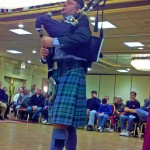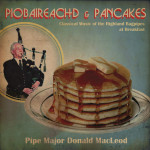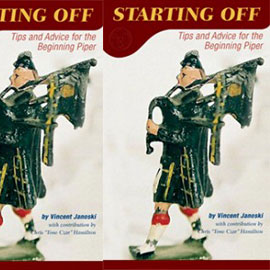Bagpiping History Lesson: “Lament for the Earl of Antrim” and Dunluce Castle
 Post Worlds, the family and I extended our UK trip and took the ferry out of Troon into Northern Ireland. We spent the better part of that week exploring the northern coast of Ulster and region of Antrim. The causeway coast is gorgeous with plenty of sight seeing and natural beauty to keep us busy. Just a short drive past the Giant’s Causeway and its famous stones are the ruins of Dunluce castle. Nothing particular about these ruins stands out from others but for the fact that Dunluce castle was the seat of the first two Earls of Antrim. Naturally my thoughts drifted to the fine piobaireachd “Lament for the Earl of Antrim,” allegedly composed by Donald Mor MacCrimmon in his lifetime and before his death circa 1640.
Post Worlds, the family and I extended our UK trip and took the ferry out of Troon into Northern Ireland. We spent the better part of that week exploring the northern coast of Ulster and region of Antrim. The causeway coast is gorgeous with plenty of sight seeing and natural beauty to keep us busy. Just a short drive past the Giant’s Causeway and its famous stones are the ruins of Dunluce castle. Nothing particular about these ruins stands out from others but for the fact that Dunluce castle was the seat of the first two Earls of Antrim. Naturally my thoughts drifted to the fine piobaireachd “Lament for the Earl of Antrim,” allegedly composed by Donald Mor MacCrimmon in his lifetime and before his death circa 1640.
Dunluce castle was in part quite an old structure. Not much is known about the ancient owners the McQuillans or their predecessors, but it wasn’t until it became long the home of the prominent MacDonnell family that the site rose to grandeur. Ranald McDonnell was indeed named first Earl of Antrim in 1620 and his son Ranald, the second Earl, was driven out the castle in 1642 to eventually take up the family’s current seat at Glenarm. All of this got me to thinking about piobaireachd. Under what circumstances would “Lament for the Earl of Antrim” have been composed? Who was the Earl and why would a lament be needed in the first place? We could think about the concerns of nobility and politics and the dry history of English and Irish government as it pertains to the history of piobaireachd, but I like to think about the people of the times, how they behaved, and how they lived when I think about the piobaireachd’s origins.
It’s interesting to note that the region was a highly desirable one by those loyal to Queen Elizabeth. The desirability of the Antrim coast and the notoriety of its gentry was in fact due to the large Scottish settlements encouraged by the first Earl’s father Sorley Boy MacDonnell. This heavy Scottish connection and population was not seen as a good thing by the English crown and those who sought to win the Queen’s favor. By all accounts, Sorley Boy was quite the character and much loved by the locals and Scottish settlers who took up residence in the glens of Antrim near Dunluce. The MacDonnells of the that time were related to the MacDonalds of Islay and the families can trace their lineage to the first Lords of the Isles. Islay and Jura can both be seen from Dunluce on a clear day and Rathlin Island, just a few miles off the coast, was very heavily settled by both MacDonnell and MacDonald alike. A short boat trip is all it would have taken for Scottish nobles to make visits back and forth and for trade and other signs of prosperity to take place. The castle is ideally located right on the coast and travelers from Scotland could have come and go with no one else in the region the wiser.
 The area was much contested and Sorley Boy was in truth as much hated as loved for it. The region saw plenty of upheaval in the late 16th and early 17th centuries. In fact, one Shane O’Neill, bitter rival of the MacDonnells was given approval by Queen Elizabeth to strike Dunluce and did so for the first time in 1564. After being on the run for a while, and retaking Dunluce once more, Sorley Boy MacDonnell was finally captured by O’Neill and imprisoned for several years in the 1580s. Sorley Boy was eventually freed and given back his lands and home before his death in 1589. His son James was quite the character and a good friend to James VI of Scotland who eventually became James I of England in 1602. James was killed in the uprisings and rebellion in the early 1600s which killed O’Neill and saw peace and prosperity restored to Dunluce when newly crowned English King James I restored land and title to Sorley Boy’s second son Ranald. In fact, things were pretty good, so much so that the King granted Ranald the title of Earl of Antrim in 1620. In 1642, the second Earl of Antrim was driven out of Dunluce and Glenarm and both castles were sacked in the newer rebellions. Many, if not all, Scottish settlers were driven away in the increasing violence. Sorley Boy’s grandson, Ranald MacDonnell, the second Earl of Antrim eventually reoccupied Dunluce castle in 1666 until his death in 1683.
The area was much contested and Sorley Boy was in truth as much hated as loved for it. The region saw plenty of upheaval in the late 16th and early 17th centuries. In fact, one Shane O’Neill, bitter rival of the MacDonnells was given approval by Queen Elizabeth to strike Dunluce and did so for the first time in 1564. After being on the run for a while, and retaking Dunluce once more, Sorley Boy MacDonnell was finally captured by O’Neill and imprisoned for several years in the 1580s. Sorley Boy was eventually freed and given back his lands and home before his death in 1589. His son James was quite the character and a good friend to James VI of Scotland who eventually became James I of England in 1602. James was killed in the uprisings and rebellion in the early 1600s which killed O’Neill and saw peace and prosperity restored to Dunluce when newly crowned English King James I restored land and title to Sorley Boy’s second son Ranald. In fact, things were pretty good, so much so that the King granted Ranald the title of Earl of Antrim in 1620. In 1642, the second Earl of Antrim was driven out of Dunluce and Glenarm and both castles were sacked in the newer rebellions. Many, if not all, Scottish settlers were driven away in the increasing violence. Sorley Boy’s grandson, Ranald MacDonnell, the second Earl of Antrim eventually reoccupied Dunluce castle in 1666 until his death in 1683.
Why is all of this important to matters of piobaireachd? The 17th century was the high period of piobaireachd composition and the time when hereditary pipers saw their highest regard. The Lord of the Isles himself and the MacLeods of Skye were said to have answered James MacDonnell’s call for help to aid him in protecting Dunluce and driving out O’Neill in the late 1590s. It is not inconceivable that MacCrimmon pipers were among those who frequently traveled to Antrim, a practice that would have continued during the more prosperous decades leading up to the 1630s. It’s easy to figure that the grand parties also thrown by the first Earl of Antrim Ranald McDonnell and the man’s place in the politics of the time could very well have been the progenitor that prompted the composition of the tune when Ranald passed in 1636. However, all of this renown began with Sorley Boy McDonnell. Being the beloved figure he was, he was said to entertain constantly and was also renowned for his lavish parities, a practice that continued with his son James, who had the good favor of the soon-to-be crowned Kind of England. Dunluce castle had an ample banquet hall that was constantly expanded with enormous kitchens and a large area devoted to guest quarters. It is not unreasonable to imagine parties lasting days.
The earliest forms of piobaireachd and perhaps its Irish and middle-European influences would have been readily heard in the very halls of Dunluce castle in the decades between 1580 and 1620. It was particularly exciting to walk the castle ruins and see the same views that were also seen by the ancient pipers. In the years leading up to more tumultuous decades, MacDonalds, MacLeods, and MacLeans would have all travelled to Dunluce on occasion for goodwill and general exchange. MacArthurs, MacCrimmons, and Rankins respectively, each hereditary pipers to these clans during this time, would have been likely guests as well, performing for the pleasure of their masters. In happier times, this would have been the ideal climate for musical fun and frolic. I picture early pipers, performing in court for their benefactors and afterward, happily hobnobbing with local musicians, exchanging tunes, inventing new ones, and otherwise reveling in a climate that was perfect for creativity. All right there on the scrags of rock in Dunluce.
Not long after Ranald MacDonnell was granted title in 1620, troubles began throughout Ireland as uprisings against the crown of England began in earnest. These were the Cromwell years of religious upheaval before the Restoration of 1660. The big parties and camaraderie at Dunluce would have diminished as would trade and other exchange. The northern Scottish clans also had their own troubles with England to contend with at the time. Long before Scottish settlers were driven away by the increasing violence in the 1630s and 40s, decreasing exchange would have been evident since Ranald and his son would have had to keep up appearances to the local Irish. The parties and good times would have clearly come to an end. Indeed, part of Dunluce castle with its ample kitchens crumbled and fell into the sea in 1639 and the castle was abandoned and ransacked shortly thereafter. It’s unlikely, given the contentious nature of the native Irish, English and Scottish settlers that parties inviting the high clans of northern Scotland would have occurred at the Earl’s new seat at Glenarm.
 The tune “Lament for the Earl of Antrim” is said to be a tune by Donald Mor MacCrimmon but, by the time the first Earl of Antrim died, Donald Mor was likely already in the ground. Well before Ranald MacDonnell’s son Ranald, the second Earl passed, the good times at Dunluce would have been on the decline and Donald’s son Patrick Mor MacCrimmon would have been in his upper years. The Antrim Earls by this time would have had to please both the English crown and the native Irish, both of whom were at each others’ throats. Donald Mor would have been at the height of his renown during the time Sorley Boy and his son James entertained at Dunluce. Young Patrick, also on the rise as a piper, would also have been there as a young lad. When Sorley Boy MacDonnell passed in 1589, it would have been a sad day indeed.
The tune “Lament for the Earl of Antrim” is said to be a tune by Donald Mor MacCrimmon but, by the time the first Earl of Antrim died, Donald Mor was likely already in the ground. Well before Ranald MacDonnell’s son Ranald, the second Earl passed, the good times at Dunluce would have been on the decline and Donald’s son Patrick Mor MacCrimmon would have been in his upper years. The Antrim Earls by this time would have had to please both the English crown and the native Irish, both of whom were at each others’ throats. Donald Mor would have been at the height of his renown during the time Sorley Boy and his son James entertained at Dunluce. Young Patrick, also on the rise as a piper, would also have been there as a young lad. When Sorley Boy MacDonnell passed in 1589, it would have been a sad day indeed.
Sorley Boy McDonnell might not have been the “Earl of Antrim” in name, but I imagine that he was considered to be so by grateful guests and subjects. All of Antrim could have likely considered him the defacto Earl, even in the presence of his son James and his son Ranald, the official Earl, as he was the main benefactor who would have initiated the many plantations formed by Scottish settlers. It could be, after Sorley Boy was imprisoned in the attacks on Dunluce or even upon his death in 1589, that the piobaireachd that became “Lament for the Earl of Antrim” was composed. Think about the good times that were had that were now lost and the man who was responsible for them. The region’s citizens would have felt likewise and provided a climate for such a tune to flourish. The loss of such prosperity would have been a hard blow. It would have been an easy thing for Ranald to honor his father and constantly request the tune of court pipers and harpers any time he entertained. The tune would thus have become a known part of the repertoire among many hereditary pipers, not just MacCrimmons.
It’s no doubt that the Antrim Earls had their share of difficulty. In the years following 1640, the Earl of Antrim was effectively on the run. The seat at Dunluce was ransacked, its posh contents stolen and sold, and the castle left in ruins in the mid to late 1600s. The power and prominence of the Earl of Antrim was all but gone by the 1660s. By the time the second Earl died in 1683, the glory days of northern Irish and Scottish exchange were over. The Earl of Antrim’s troubles were certainly tune worthy. If “Lament for the Earl of Antrim” was indeed a tune by Donald Mor MacCrimmon though, he could not have possibly composed it in remembrance of the waning prominence and/or death of the first or second Earl of Antrim. It is more reasonable given the conditions that would have exposed the MacCrimmons to Antrim, that Donald Mor composed the tune as an homage to Sorley Boy MacDonnell and/or his son James in fond remembrance of good and prosperous times at the courts of Dunluce. By the time the first official Earl of Antrim came to authority, he could have adopted the tune as its own and requested it often in remembrance of his father and happier times up until his death in 1636. In later years, MacCrimmon and MacArthur pipers alike would have also played the tune when visiting Dunluce. It comes down to an interpretation of the meaning of “Lament for…” Was it a “Lament for” in remembrance of the Earl, or “Lament for” as in given to the Earl? Either way, “Lament for the Earl of Antrim” was possibly a tune that echoed in the halls of Dunluce castle by visiting pipers long before the actual passing of the first or second Earl of Antrim.
 Pipehacker
Pipehacker








